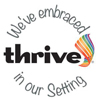English, Communication and Reading

Communication
Intent
|
“The most important thing in communication is to hear what isn’t being said” At Priory Woods School, communication is an integral aspect of our curriculum and is highly valued in whatever form it is, this may include facial expression, gesture, body language, vocalisation alongside symbols, sign, speech, and electronically aided speech. Forming relationships between staff and pupils is vital to begin to understand the way our pupils communicate. We listen, observe and encourage their ‘voice’ to understand and develop forms of communication individual to themselves. Pupils are exposed to many opportunities to develop interaction and listening skills. Being an effective communicator allows pupils to express their needs, likes and dislikes, make choices, to develop relationships and their independence, within school and beyond. |
Implementation
The curriculum will be implemented through:
- Assessment and Individualised Planning: Develop individualised communication plans, considering factors such as preferred communication methods, strengths, challenges, and goals.
- Inclusive Classroom Environment: Create an inclusive classroom environment that fosters communication and social interaction. Provide visual supports, clear routines, and structured activities to support comprehension and participation for all students.
- Differentiated Instruction: Implement differentiated instruction to meet the diverse communication needs of students. Offer multiple modalities of instruction, including visual, auditory, and tactile methods, to ensure accessibility for all learners.
- Explicit Instruction: Provide explicit instruction in communication skills, breaking down complex concepts into manageable steps. Use concrete examples, modelling, and repetition to support understanding and skill development.
- Use of Visual Supports: Incorporate visual supports such as visual timetables, communication boards, and picture symbols to enhance comprehension and communication.
- Augmentative and Alternative Communication (AAC): Introduce AAC systems and devices as appropriate for students with limited verbal communication abilities.
- Social Skills: Integrate social skills training into the curriculum to support students in developing interpersonal communication skills. Teach skills such as turn-taking, active listening, initiating conversations, and interpreting social cues through structured lessons and role-playing activities.
- Collaboration with Specialists: Collaborate with speech-language therapists, occupational therapists, and other specialists to support the communication needs of students. Seek their expertise in assessing students, developing intervention plans, and providing targeted support.
- Parent and Caregiver Involvement: Involve parents and caregivers in the communication curriculum by providing resources, training, and opportunities for collaboration. Share strategies and techniques for promoting communication skills at home and encourage ongoing communication between home and school.
- Ongoing Assessment and Progress Monitoring: Continuously assess students' progress in communication skills and adjust instruction and intervention strategies accordingly.
By implementing these strategies, the communication curriculum in Priory Woods School can effectively support students in developing essential communication skills and maximise their potential for success in academic, social, and life contexts.
Impact
Engage
Students can
- Make simple choices.
- Make wants and needs to be known.
- Successfully use and recognise objects of reference, pictures of reference and symbols.
- Self-regulate and there have been improvements in behaviour because students know what is happening next.
- Use the tools and skills they have had exposure to, which enables communication to the best of their ability.
- Show high levels of engagement (shown on the Evidence for Learning engagement scale).
- Have a voice.
Explore
Students can
- Communicate their needs and wants effectively.
- Make independent choices in class, around school and within the community.
- Use their communication skills to socialise appropriately and effectively with peers and adults.
- Share their view, news, opinions and feelings.
- Learn the skills to utilise symbols and signs to understand their environment.
Challenge
Students can
- Communicate effectively and confidently to familiar and unfamiliar people.
- Make independent choices, in school, home and the community.
- Share their views and feelings.
- Socialise appropriately and possibly independently.






